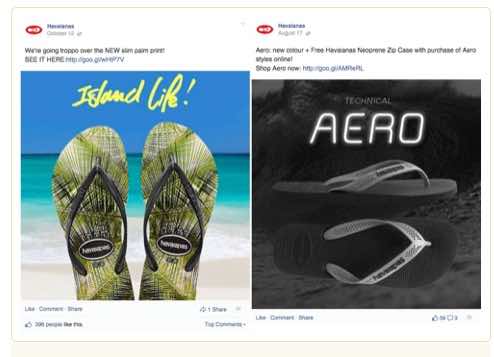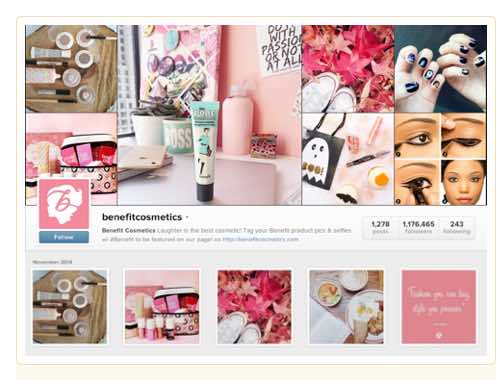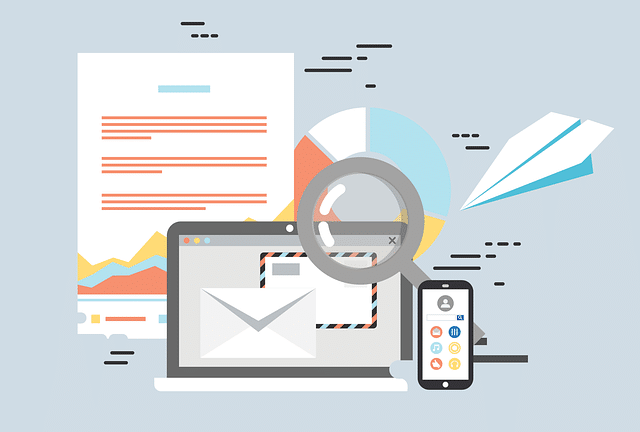
Ask Questions on Your Facebook Page to Get More Comments *
How Asking Questions on Facebook Gets More Comments
As a business owner, I hope you have made the choice to build a Facebook presence for your business. It makes sense if you want to reach your target audience, engaging them and making a lasting connection.
It’s becoming increasingly difficult to grow your audience using Facebook. Especially if you don’t have the budget to boost posts or advertise.
However, you can still use Facebook effectively without spending any money. The most important thing that you do is to increase engagement with your existing followers. Doing this also prompts Facebook to show your posts more widely.
Do your visitors engage with you on Facebook?

Social Media Engagement Matters
As well as signaling to Facebook that people like what you’re posting, high levels of visitor engagement also means that:
- your readers will believe that you’re interested in them, and that you want to build a relationship with them
- you’ll build social proof. If someone discovers your Facebook page and sees you’re engaging with your visitors, they’re more likely to want to join in.
There are several different types of engagement, including:
- People liking your Facebook page.
- People reacting to your updates on Facebook.
- People sharing your posts on their page or group.
- People commenting on your posts.
The engagement I like best is when visitors comment on your posts. When readers leave comments, it gives you an opportunity to learn about them. They’re not just going for the easy option of clicking “like”. They’re putting themselves out there and responding to your post.
This article is all about getting more comments on your Facebook page. The most effective way I’ve found to do that on any medium, is to ask questions.
That sounds pretty obvious, right? I’m amazed how many of the pages I follow never ask questions. They never take the opportunity to get me commenting and engaging with them.
If you want to grow an audience of people who feel like they know, like and trust you, then you need to ask questions. But not just any questions. You need to ask the right types of questions.
Nine Types of Question You Can Ask On Your Facebook Page
Ask A “Biggest Problems” Question
It may seem negative asking your readers to share their biggest problems, challenges, obstacles or even fears. However, you’ll be surprised by the honest responses that come out in the discussion.
You can even ask fairly specific things. On a parenting page there might be questions such as:
- What’s your biggest fear as a parent?
- What’s your biggest challenge raising boys?
- What’s the biggest problem you have in the area of discipline?
These types of questions help you understand your pages followers. The reponses can also help you choose future content topics for your blog.
You may also find people mentioning problems you’ve written about in past articles or posts. You can engage them and say, “Here’s an article with some tips on how to overcome that challenge”, driving people back to your archives.
Ask A “Question from a Reader”
This is a technique commonly used by my friend Samantha Jockel from School Mum. She’ll often write a post like this:
Her questions which always start with “A School Mum asks” are sometimes funny, sometimes start debates, and sometimes offer a way in to more controversial topics. And they often get a lot of comments.
If you don’t have any questions from readers, you might be able to create some by digging into:
- comments on your blog
- comments left on your Facebook page
- emails you’ve received.
Ask A “Share a Photo” Question
While this won’t work for every type of site, however asking your readers to share a photo or video can be relevant to many Facebook pages.
This could work on many types of blogs. Here are some I’ve seen.
- Parenting blogger – “Show us a favorite piece of your kids art.”
- Food blogger – “Show us the most recent picture of food on your phone.”
- Travel blogger – “Show us your favorite beach.”
- Fashion blogger – “Show us your favorite pair of shoes.”
- Technology blogger – “Show us what you have in your laptop bag.”
You may not get as many comments as you would with other types of questions. But you’ll probably get some really interesting ones.
Ask A “This vs That” Question
With this type of question, you get your followers to choose one of two options. It might be something like “Are you a dog or a cat person?”
You can also use this for a yes/no question such as, “Do you exercise daily? Yes or no”.
Be careful if your question is likely to spark a lively debate. We don’t ask about certain types of topics because the conversation can end up getting a bit negative.
Ask A “What are Your Dreams” Question
Ask your followers about their dreams and aspirations. It helps you understand not only what your readers are going through right now, but also what they want to do or become.
This gives you another opportunity to use your readers’ responses to create content that helps them move toward the dreams they have.
People love to tell others about their dreams, ambitions and hopes for their future. This type of question often receives a lot of well thought out comments.
Ask An “Accountability” Question
You’ll find this type of question used in a lot of Facebook groups. They will often ask things like, “What’s your biggest goal of the week?” or “What do you want to achieve this week?”
This can be a great way to get engagement because it gives you the opportunity to respond to readers later in the week.
I left a comment on a post like this on Monday. On the Friday the blogger left a reply to every single comment that mentioned a goal, asking, “What did you achieve…?”
I hadn’t reached my goal. However I got it done ten minutes after he left that comment. I was really grateful that blogger took the time to keep me accountable. And I’ll be going back to that page.
If your page involves people trying to build a habit, learn something or become something, you could ask this type of question and then come back to encourage them and help build some accountability.
Ask A “Fill in the Blank” Question
This is a really easy and effective) type of question to ask.
For a blog such as Better Business Alliance I might ask:
My first blogging platform was __________.
And for a food blog you might ask something like:
The word that describes my diet is ____________.
or
My favorite comfort food is _______________.
The beauty of this type of question is that it’s incredibly simple for someone to answer. They just have to leave one word.
Asking a “fill in the blank” question is often a good way to get someone to leave their first comment. This is especially true if they’ve been following your page for a while without commenting.
Ask A “Question About a Blog Post”
When you share a link to a blog post you’ve written, you can add a question. This will often encourage readers to read your post as well as comment.
For instance, one post I shared a while back on Better Business Alliance was “5 Steps to Developing Your Unique Selling Proposition”.
As well as posting the link to Facebook (which automatically pulled in the title and image from the post), I added a question: “Why You Need to Develop a Unique Selling Proposition?”
My goal was to get people reading that blog post. But I also got lots of people answering the question. We don’t normally get many comments on our links to blog posts, but in this case 3 people answered the question. That particular Facebook post also had a higher-than-average reach.
Hopefully you’ve already tried some of these types of questions on your Facebook page. The key is to get into the habit of asking questions regularly, and mixing up the types of questions you use.
Ask A “What are Your Tips” Question
Although people are coming to your Facebook page to learn from you, in any community there’s a lot of collective wisdom.
With this type of question you can say, “I want to hear from you today with your tips” about a particular area.
You may not get as many responses to this type of question as you would to a “fill in the blanks” question. But the responses will be deeper, longer, and more useful. They’ll be valuable both to you and your other readers.
And if you get permission from those who comment which you can do by mentioning how you plan to use some responses as future blog post topics. Just be sure you give credit to the people who left those comments.
Final Tips for Using Questions on Your Facebook Page
You need to keep some things to keep in mind when asking questions on your Facebook page.

Always Stay On Topic
Make sure your questions relate to your topic. Occasional off-topic questions can help build engagement, but don’t do it too regularly. Your readers may feel that your page topic is getting lost.
Don’t Ask Too Many Questions
Mix up the types of post that you publish. Share links, videos, pictures, and so on as well as questions. Facebook seems to prefer this, and it’s likely to be better for reader engagement too.
Consider Using Facebook Live
Facebook Lives get more reach than other types of post. So you may want to go on Facebook live and ask your readers a question. Once your live video is over, it will appear in people’s Facebook feeds as a replay.
Be Specific With Your Questions
Don’t be too open ended with your questions. You’re likely to get much better responses if your questions are focused. You want to make it as easy as possible for people to comment. If your questions are too open ended they may not understand how to respond.
Consider Using an Image
Using an image helps your question stand out in people’s newsfeeds. It could be a plain image, or an image that includes your question text. Spending a minute or two doing this could boost your engagement.
Be as Responsive As You Can Be
If people answer your question, they should get a response from you. They’ve taken the time to respond to you, so take some time to respond to them. That doesn’t always need to be with a comment. You might use a “like” or other response, particularly if they left a “yes”/“no” or single-word comment.

Will You Adopt an Asking Questions Mindset?
I hope this helps you come up with lots of ideas for questions you could ask on your Facebook page to build engagement. Of course, you don’t have to limit your use of questions to Facebook pages.
You can use questions in Facebook groups, LinkedIn groups, on Twitter, or even on your blog. Let me know if my article has given you an asking questions mindset? Are your questions getting more comments from your visitors?



















